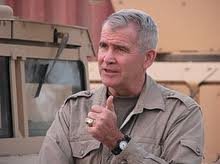A dam is a barrier that stops or restricts the flow of surface water or underground streams. Reservoirs created by dams not only suppress floods but also provide water for activities such as irrigation, human consumption, industrial use, aquaculture, and navigability. Hydropower is often used in conjunction with dams to generate electricity. A dam can also be used to collect or store water which can be evenly distributed between locations. Dams generally serve the primary purpose of retaining water, while other structures such as floodgates or levees (also known as dikes) are used to manage or prevent water flow into specific land regions.
The word dam can be traced back to Middle English, and before that, from Middle Dutch, as seen in the names of many old cities, such as Amsterdam and Rotterdam.
Ancient dams were built in Mesopotamia and the Middle East for water control. The earliest known dam is the Jawa Dam in Jordan, dating to 3,000 BC. Egyptians also built dams, such as Sadd-el-Kafara Dam for flood control. In modern-day India, Dholavira had an intricate water-management system with 16 reservoirs and dams. The Great Dam of Marib in Yemen, built between 1750 and 1700 BC, was an engineering wonder, and Eflatun Pinar, a Hittite dam and spring temple in Turkey, dates to the 15th and 13th centuries BC. The Kallanai Dam in South India, built in the 2nd century AD, is one of the oldest water regulating structures still in use.
Roman engineers built dams with advanced techniques and materials, such as hydraulic mortar and Roman concrete, which allowed for larger structures. They introduced reservoir dams, arch-gravity dams, arch dams, buttress dams, and multiple arch buttress dams. In Iran, bridge dams were used for hydropower and water-raising mechanisms.
During the Middle Ages, dams were built in the Netherlands to regulate water levels and prevent sea intrusion. In the 19th century, large-scale arch dams were constructed around the British Empire, marking advances in dam engineering techniques. The era of large dams began with the construction of the Aswan Low Dam in Egypt in 1902. The Hoover Dam, a massive concrete arch-gravity dam, was built between 1931 and 1936 on the Colorado River. By 1997, there were an estimated 800,000 dams worldwide, with some 40,000 of them over 15 meters high.
History
Ancient dams
Early dam building took place in Mesopotamia and the Middle East. Dams were used to control water levels, for Mesopotamia's weather affected the Tigris and Euphrates Rivers.
The earliest known dam is the Jawa Dam in Jordan, 62 miles northeast of the capital Amman. This gravity dam featured an originally 30 ft and 3.3 ft stone wall, supported by a 160 ft earthen rampart. The structure is dated to 3000 BC.
The Ancient Egyptian Sadd-el-Kafara Dam at Wadi Al-Garawi, about 25 km (16 mi) south of Cairo, was 335 ft long at its base and 285 ft wide. The structure was built around 2800 or 2600 BC as a diversion dam for flood control, but was destroyed by heavy rain during construction or shortly afterwards. During the Twelfth Dynasty in the 19th century BC, the Pharaohs Senosert III, Amenemhat III, and Amenemhat IV dug a canal 16 km (9.9 mi) long linking the Fayum Depression to the Nile in Middle Egypt. Two dams called Ha-Uar running east-west were built to retain water during the annual flood and then release it to surrounding lands. The lake called Mer-wer or Lake Moeris covered 660 sq miles and is known today as Birket Qarun.
By the mid-late third millennium BC, an intricate water-management system in Dholavira in modern-day India was built. The system included 16 reservoirs, dams and various channels for collecting water and storing it.
One of the engineering wonders of the ancient world was the Great Dam of Marib in Yemen. Initiated sometime between 1750 and 1700 BC, it was made of packed earth – triangular in cross-section, 1,900 ft in length and originally 13 ft high – running between two groups of rocks on either side, to which it was linked by substantial stonework. Repairs were carried out during various periods, most importantly around 750 BC, and 250 years later the dam height was increased to 23 ft. After the end of the Kingdom of Saba, the dam fell under the control of the Ḥimyarites (c. 115 BC) who undertook further improvements, creating a structure 46 ft high, with five spillways, two masonry-reinforced sluices, a settling pond, and a 3,300 ft canal to a distribution tank. These works were not finished until 325 AD when the dam permitted the irrigation of 25,000 acres.
Eflatun Pınar is a Hittite dam and spring temple near Konya, Turkey. It is thought to date from the Hittite empire between the 15th and 13th centuries BC.
The Kallanai is constructed of unhewn stone, over 980 ft long, 15 ft high and 66 ft wide, across the main stream of the Kaveri River in Tamil Nadu, South India. The basic structure dates to the 2nd century AD and is considered one of the oldest water diversion or water regulating structures still in use. The purpose of the dam was to divert the waters of the Kaveri across the fertile delta region for irrigation via canals.
Du Jiang Yan is the oldest surviving irrigation system in China that included a dam that directed water flow. It was finished in 251 BC. A large earthen dam, made by Sunshu Ao, the prime minister of Chu (state), flooded a valley in modern-day northern Anhui Province that created an enormous irrigation reservoir 62 mi in circumference, a reservoir that is still present today.
If you want to read a whole lot more, go here https://en.wikipedia.org/wiki/Dam
and https://en.wikipedia.org/wiki/List_of_dams_and_reservoirs_in_the_United_States
- 1 head romaine lettuce, washed and chopped
- 3 ribs celery, chopped
- 1/2 red onion, chopped
- 4 plum tomatoes, chopped
- 2 tablespoons chopped fresh dill
- 1 package (8 ounces) frozen salad shrimp, thawed
- 3/4 cup ranch dressing
- 6 (10-inch) flour tortillas
- In a large bowl, combine all the ingredients except the tortillas; mix well.
- Place equal amounts of salad mixture in the center of each tortilla. Fold the bottom of each tortilla up over the salad mixture then fold both sides over envelope-style; roll up to seal. Place tortillas seam side down, cut each in half, and serve.
National Manufacturing Day on the first Friday in October celebrates those who proudly stand behind our goods and services in America. In the United States, we continue to develop products and unlock new technologies growing our economy. Manufacturing businesses create jobs through entrepreneurship, and their competitiveness revitalizes American manufacturing.
Throughout the observance, more than 1,600 American manufacturers will open their doors and participate. They will take up the important work of inspiring our young people to pursue careers in manufacturing and engineering. Today’s science, technology, engineering, and math (STEM) graduates will power the next chapter of American production and innovation. Harnessing their potential is an economic imperative.
HOW TO OBSERVE NATIONAL MANUFACTURING DAY
Find local manufacturing events, explore innovative ideas, and collaborate on new technologies. Encourage students to attend job fairs or ask your employer to participate. You may help inspire the next generation to fill your shoes when we need it most. Since many skilled laborers will be retiring, there will be more jobs than workers.
NATIONAL MANUFACTURING DAY HISTORY
Governor Chris Cristie of New Jersey proclaimed the first official Manufacturing Day in 2012. President Barack Obama signed the Presidential Proclamation in 2014.
Manufacturing FAQ
Q. What types of manufacturing is in the United States?
A. Businesses in the United States manufacture the tiniest of components to building supplies to complete structures. While we often think of manufacturing as an assembly line that builds equipment, it’s so much more. Some examples of the different kinds of manufacturing include:
- Textiles
- Clothing
- Food
- Furniture
- Electronics
- Transportation
- Chemicals
- Plastics and Rubber
- Metal fabricating
- Wood products
Q. Has manufacturing grown in the U.S. in recent years?
A. Yes. Manufacturing in the U.S. is on the rise. The rise of manufacturing in the U.S. creates a growing demand for skilled labor.











